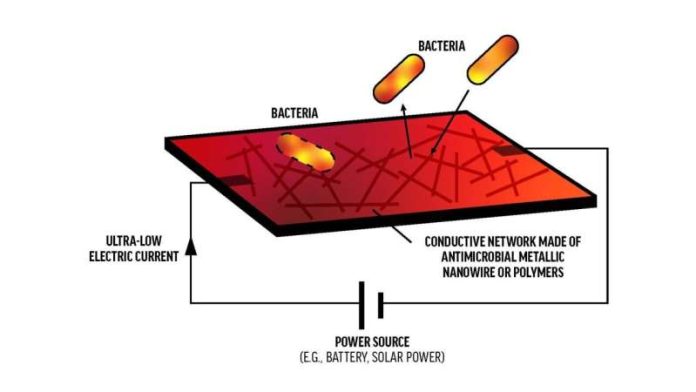
A team of researchers from the University of Arkansas has invented a powerful new way to keep surfaces free of germs.
By combining silver—a metal known for killing bacteria—with a tiny electric current, they’ve created an antimicrobial surface that can destroy harmful microbes like E. coli.
“It’s a synergistic effect,” said physicist Yong Wang, one of the lead scientists. “It’s not just silver plus electricity—it’s much more powerful when we use both together.”
Silver, along with other metals like gold and copper, is known to kill bacteria and viruses. Electricity can also kill microorganisms.
The research team combined these two methods using silver nanowires, which are incredibly thin wires made of silver. These nanowires both kill germs directly and carry a very small electric current across the surface.
In lab tests, the team applied their invention to glass and found that it completely killed all E. coli bacteria on the surface.
The electric current used is so small—a microampere—that people can’t even feel it. Plus, it doesn’t take much power: a solar panel no larger than a fingernail could keep the surface working.
Alongside Wang, the research team includes chemist Jingyi Chen and physicists Hugh Churchill and Jin Hu. They say the invention not only kills germs but also prevents them from growing back, keeping the surface clean and sterile over time.
The University of Arkansas is now trying to patent the invention and is looking for companies that want to bring the product to market.
Wang believes this technology could be used in many ways. For example, door handles, kitchen counters, and hospital equipment could be coated with the germ-killing surface to improve hygiene. It could also be used in places like restaurants or food factories to reduce the risk of contamination.
Even more exciting, the nanowire system could be added to fabrics to create germ-resistant face masks, gowns, or air filters. This could give extra protection to healthcare workers or anyone in a public space.
With this new invention, keeping surfaces safe and clean might soon become a lot easier—and more high-tech.



